
A favourite day tour for most visitors is the former health resort and summer paradise in the southern archipelago of Gothenburg.
Photos © JE Nilsson, CM Cordeiro Nilsson and Kevin Cordeiro
This post is coming to you in the early autumn of 2011. The first weeks of September brings a certain cooling of the climate even in southern Sweden, where the light in the days get more mellow, casting long shadows as you walk the streets in the evenings. You might still find warm days to come but days with fully brilliant sunshine tinted crystal blue and gold is something that is typical in Sweden in high summer.
1. One little known fact about the city
Through the city of Gothenburg, Sweden, runs the Göta River. During the Viking era 900 years ago, the sea level was a full 2.5 meters higher than today and the Göta River was then a fjord that stretched far inland. Where the city of Gothenburg is today, was mostly sea bottom. On old maps you can see how the Göta River was called the Vike Fjord. If you today follow the old river valley 40 km up-streams you will come to what remains of the small and almost forgotten Viking capital called Lödöse. At that time Lödöse was an important trading town of Scandinavia and a precursor to modern day Gothenburg. Once in Lödöse you will find the neatest museum, with the friendliest staff, ever. Visit it, have coffee and explore some authentic Viking history.
2. Weather and seasonal differences
Temperature ranges over the year in Gothenburg, with the coldest time around January (-10C to +5C) and warmest during July-August (around +20C). You can experience anything from between a snow blanketed landscape with a sea filled with blocks of broken ice in the southern archipelago of Gothenburg in the Winter, to clear blue skies and pure honey gold sunshine on your back at Midsummer’s.
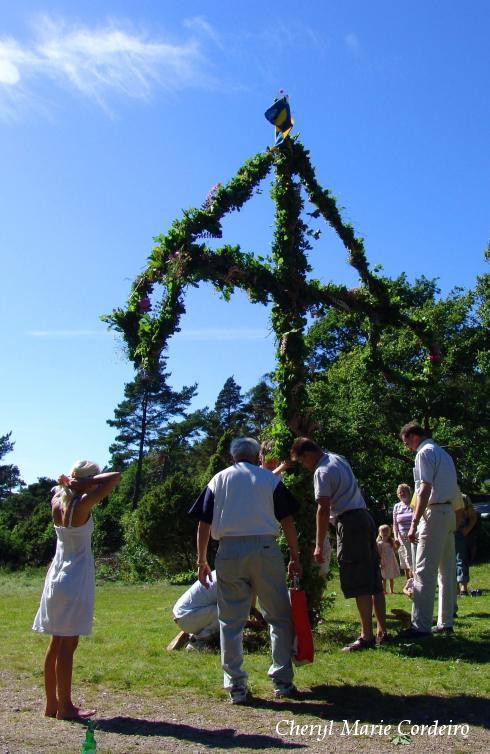
In Sweden, in both public and private places a ‘Midsummer’s Pole’ is a popular fertility symbol from ancient times. Around the pole, is a party that lasts all afternoon on Midsummer’s Eve, to the next dawn of day, in celebration of the longest day of the year – Midsummer’s Night.
Just long days in summer, come similarly long nights in winter. During November to February, the weather in Gothenburg turns cold and windy, with temperatures between +5 to -10C. So you’ll need that winter down jacket if you’re headed this way! The up-side is Christmas and New Year celebrations that are the dazzling attractions of the winter months here.
Christmas festivities include plenty of Christmas markets to visit around the city, all quite charming, selling a variety of homemade Swedish fare, and traditional Swedish handicraft works from wood carvings to hand-knit wool sweaters, gloves and hats that make perfect Christmas gifts.

A kayak, waiting for the winter to loosen its hold.
New Year’s is best spent at the Gothenburg Opera House, along the Gothenburg Harbour Front. Enjoy the Opera’s special gala show. Nibble away at strawberry soaked champagne while watching the city’s public fireworks go off at midnight is heavenly. The air is full of romantic and you’ll feel the atmosphere charged with the promise of possibilities for the year that is to come. Hint: Book WELL in advance.
3. One ‘must bring along’ item
For anyone coming from a tropical or warmer climate zone, however readily available in the shops, a fleece jacket is a good thing to bring along at any time of the year. Fleece jackets are light and pack well. You have them under your down jackets in winter and slung over your shoulders during the sometimes chilly summer evenings. You will appreciate this item from the moment you land in Sweden. Wear a windbreaker or sailing jacket over the fleece jacket, and you’ll have quite hardy wear for the City of Gothenburg. A style tip when in Gothenburg – nautical is always in fashion!
4. Getting around
The best way to explore the city is on foot. The city is quite small and enough attractions to fill up any a day, are all within walking distance of each other. The city however, has a well-built public transport system that includes trams, buses, ferries and bicycles for rent.

Bikes for rent is available throughout the city, and also in the archipelago.
A transport flat fee cash card or day or week pass is a money saver and is ideal for trams, buses and ferries that go to the connecting islands around Gothenburg. These transport cards that can be bought from Västtrafik ticketing offices in the city, allow the user access to anywhere within the city limits of the city. Inter-city speed trains are also available at the Gothenburg Central Station should you wish to make day trips to other cities and towns such as the capital, Stockholm or in the other direction, Malmö, a city that is in southern Sweden.
Taxis within Gothenburg are readily available. A Swedish taxi fare withing the city can easily run into some 200-300 SEK per ride. A single ride by tram / bus / ferry ride is about 16 SEK, flat fee.
5. The ‘old towns’ of the City
There are at least three old original areas in Gothenburg worth visiting. Oldest, is the City within the Moat with Kronhuset as center. Most original and almost forgotten, is a small area in Majorna opposite the Maritime Museum, called Gathenhielmska reservatet, which is kept to show how the common sailors lived two centuries ago. This should be seen in sequence with the nearby Klippan, which is today, a tourist attraction. The third and the most accessible and one of my absolute favourite places in Gothenburg, is the old town of Haga.
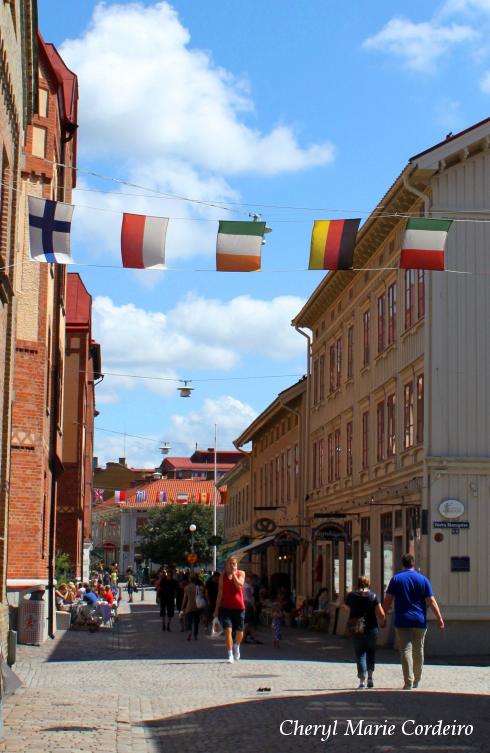
The old town of Haga with its cobble stone roads is filled with small shops and cafés.
Established in the mid-17th century, Haga was Gothenburg’s first suburb built for the working class people of the city just outside of the city moat. In the 1690s, due to the fear of the city of Gothenburg coming under siege by neighbouring regions, 34 houses of the district were demolished in order to build a covered causeway, a caponier from the city walls to the fortress of Skansen Crown, which still stands overlooking Haga.
Haga is today renowned for its romantic and narrow stone cobbled streets, still just wide enough to fit a single horse-carriage. Rustic wooden houses line the streets with a 19th century-atmosphere and it is here that you will find gorgeous, cozy cafés that serve homemade, artisan ice-creams and chocolates. A style tip here is, flat soled shoes are best used when navigating this area as women’s kitten heels or stilettos tend to get caught in between the stoned pavement.
6. Languages to get you around
Most Swedes are bilingual and English works almost everywhere.
Food and wine
7. Morning – What’s for breakfast
Hotels in Gothenburg offer anything from modest to world class gourmet buffets depending on where you choose to stay. A normal Swedish breakfast usually consists of a variety of diary products, cereals and fruit, ham and cheese. My personal favourite is Swedish Filmjölk with lingonberry jam and a dash of fresh ground cardamom on top and a cup of thick, Spanish style hot chocolate laced with espresso.
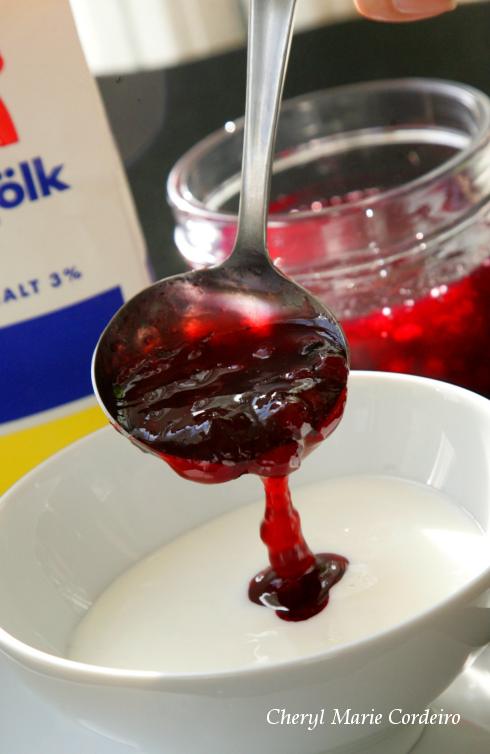
At breakfast you are likely to be exposed to a phenomena called filmjölk. It goes very well with most any kind of fruits or jam and cereals.
With the appearance of diluted yogurt though less sour in taste, filmjölk is an old Scandinavian specialty where written records date it back to the Viking Age or longer. There is currently no standard English translation of the word. It is usually eaten for breakfast or as a snack between meals in Sweden. It can be drunk from a glass, but is usually eaten from a bowl with a spoon as the liquid is fairly thick. In Sweden, it is normally sold in 1-liter packages, where these days in supermarkets, they come fruit and vanilla flavoured. Best is plain filmjölk since then you can pretty much combine it with any fruit or cereal you like.
8. Daytime – Where to grab some grub
The best grab-and-go quicksnack to keep you alive is probably McDonalds or Burger King, that offers excellent value for money in this city. Other good choices are Middle-Eastern, Thai, Indian, Chinese or other ethnic eateries that on the whole cook their meals from fresh produce. Some of these are located in and near the Saluhallen wet market. Otherwise, low end Swedish restaurants in general, rely too heavily on food industry prefabs and are on the whole a disgusting waste of time.
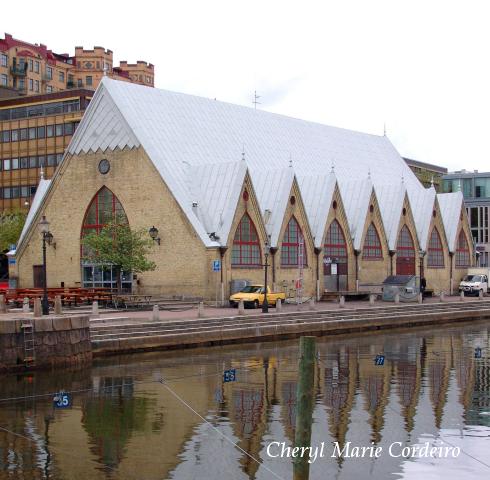
The name ‘Fish Church’ is originally an unofficial nick name given to this seafood wet market by the locals, due to its commanding architecture, as compared to its profane purpose.
There are exceptions though and one ‘must do’ thing in the city is to have a shrimp salad sandwich or similar at Fiske Kyrkan, which is a wet market located along the old city moat at Rosenlund. This summarizes in one dish, everything that is Gothenburg and the Swedish west coast living.
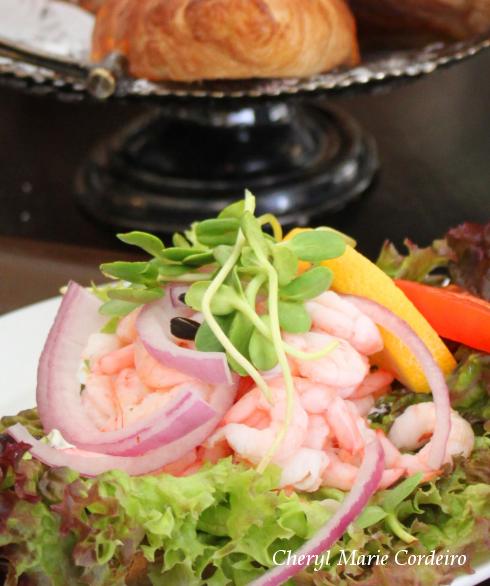
A shrimp salad sandwich summarizes in one dish everything that is Gothenburg and Swedish west coast living.
9. Evening – wine and dine
On the other hand, Gothenburg is also the place where to enjoy excellent world class gourmet food. On top of this list is Sjömagasinet, a restaurant located in a building that once was erected by the old Swedish East India Company to be used as a ships equipment magazine at the Gothenburg sea harbour. Regardless of what, this is the best restaurant in the city. Specialty is as it should be, Swedish west coast seafood and piscatorial cuisine. Lunch and dinner menus vary daily, check their website for what’s cooking. Prices are … worth it. Set aside ample time and a budget, for letting the sommelier surprise you.
10. Night – The coolest places to chill out
Gothenburg is vibrant in its nightlife and chill-out places in general, especially along Kungsportsplatsen and Avenyn.
Push
It has one of Gothenburg’s most exquisite interiors for a nightclub, with a rooftop terrace, cool music and it’s where all the beautiful people are seen in Gothenburg! Exclusive crowd, located on the Avenyn 11-13, Gothenburg.
Excet is the largest club in Gothenburg’s and also situated near the Avenyn at Vasagatan 52. The place has three storeys and a big summer terrace, with six bars, four DJs and two dance floors. If you don’t find it here, they are probably not out this night.
If you are looking for Blues, Jazz and World Music. Nefertiti is the place. Popular and trendy, with a young crowd of mid-twenties to early thirties. Located at Hvidtfeldtsplatsen 6.
11. What a visitor is likely to like the most
The vibe of the city beat is generally relaxed and friendly. Even if you take a wrong turn when driving and end up in the wrong lane facing on-coming traffic, the worst that usually happens here in Gothenburg is a couple of curious and amused stares in your direction. You will instantly be classified as a tourist and helped out of the situation. If you get horned at, rest assured that is another tourist.
On the whole the biggest cultural taboo in Sweden are cultural taboos. Not imposing your values on others is important and you will find that the Swedes do likewise, and are happy to let you be in self expression. If you insist on wearing your home country’s tribal gear at rush hours and this includes a generous set of porcupine spikes, the average Swede will just give you some more room, while the sturdier percentage might toss you into the canal. Basic politeness and some common sense goes a long way, such as not cutting queues and not bringing your own food and drink to restaurants etc.
Student humor by the brilliant students at Chalmers and the University of Gothenburg’s School of Business is evident and abound in the streets of Gothenburg. If you see someone in a ku klux, it might be the real thing, but it might also be a bunch of guys staging a stag party. Anyone getting the idea to run naked in the street might find himself laughed at and applauded for bravery, rather than arrested.

Carl Milles’ bronze sculpture of ‘Poseidon’ is located in front of the Gothenburg Art Museum and is also the focal point of The Avenyn.
The apparent relaxed and lateral mindedness of Swedes doesn’t of course mean that there are no social rules or norms. Silly behaviour can get anyone into trouble anywhere, but on the whole you will find that Swedes – often renowned for their reserved coolness – are some of the most helpful and easygoing people on the globe. Individuality and creativity are important for Swedes and you will find them egalitarian and environmentally aware, non-judgmental and with little stereotypes of how people should or ought be.
12. What do the locals like to do on the weekends?
Swedes are big nature lovers, not only do they love experiencing nature but taking care of it, so swimming, sailing, fishing, mushroom hunting in the woods, hiking or tending to their farms as hobby are quite natural things to do over the weekend.
A visit to the Gothenburg’s Southern Archipelago located at the mouth of the Gota River, is plesant as well as budget friendly. A bus or tram flat fee ticket will take you all the way out in the archipelago, since the traffic system is one and the same.
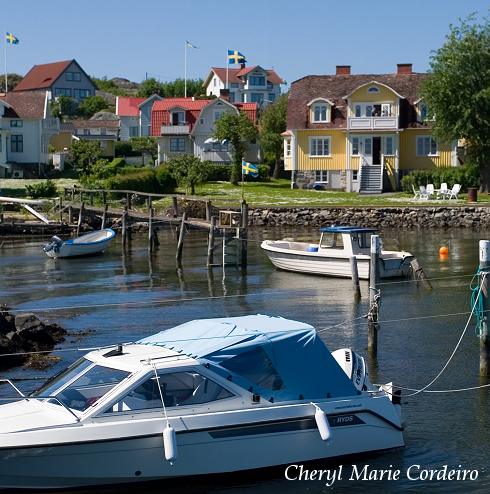
Nature, sea and fresh air lovers in Gothenburg, all seem to head out towards the Southern Archipelago of the city to stroll, picnic, swim, sun bathe or to sail.
The Southern Archipelago of Gothenburg is a given, for a day along the Swedish west coast sea – swimming, sailing, crab fishing and strolling the privately owned streets of the islands. Stopping to have a ‘fika’ (roughly equivalent to a coffee break) with traditional cinnamon rolls at an island café is just paradise!
These islands are Scandinavia’s Riviera, where both locals and tourists alike visit by there own or indeed keep their sailing boats or yachts during the summer, riding the Nordic waves and enjoying the sea breeze.
Historically, Styrsö in the Gothenburg’s Southern Archipelago became a popular health and spa outdoor bathing resort during the late 19th century, where all townsfolk that could afford a holiday, went to enjoy sun and a refreshing mud bath.

The 2nd of October 2005, a rebuilt replica of the East Indiaman Gotheborg left Gothenburg for a voyage to China and back. The home harbour is now Gothenburg where she could be seen regularly docking at a quayside when not under sail.
During the 18th century the Southern Archipelago was the departure point of the Swedish East India company trading ships that sailed between Gothenburg – via Cadiz, Cape Town and the Straits of Malacca – to Canton in China, trading in Tea, silk and fine porcelain.
Apart from nature, Swedish families with children love to visit Liseberg, Scandinavia’s largest amusement park.
13. Shopping
Second hand bargain shopping
Second hand bargain shopping is a big thing in Gothenburg and there are many shops and street bazaars that you might wish to visit when in Gothenburg. Swedes are not only generally environment and eco-conscious but, they harbour a genuine love for good quality items, be they even retro items with a hint of nostalgia and most things built here is built to last. Thus great bargains can be had if you look for the second hand and the antiques stores and markets.
Outlet shopping
Outlet shopping at a place about an hour’s drive away from Gothenburg, at Ullared, is a must. There’s a reality show made about this place in Sweden and Swedes actually camp there for several days, doing nothing but… shop!
Food, candy and bakery shopping
Food, candy and bakery shopping and eating is a given, if looking in the right direction. For bakery as an art form a visit to the multi award winning patisserie, Magaretas Bröd och Bakverk (Magareta’s Bread and Bakery) is fun. Owners Maria and Alexander Grave offer their unique recipes for breads, pastries and chocolate confections at their outlet. Marie has proven her expert knowledge and skills in the field by winning a whole bunch of various culinary awards and in 2010, they were commissioned to make the wedding cake to the Royal Wedding of the Swedish Crown Princess HRM Victoria.
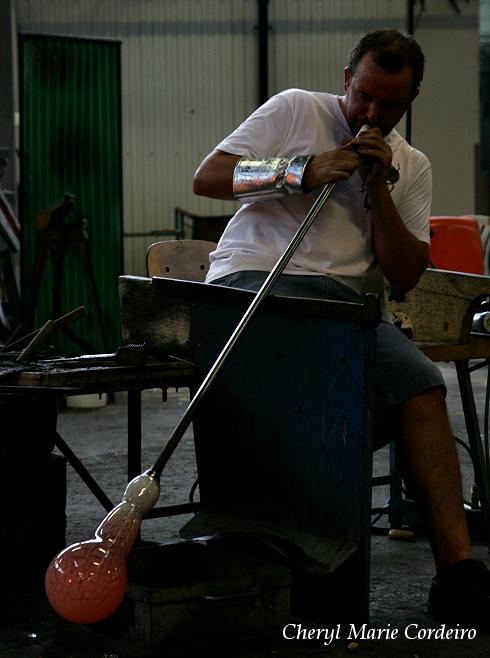
In the nearby ‘Glasriket’, in the Småland region, you can see the famous Swedish art glass being created one piece at a time as you watch.
Swedish art glass in Glasriket
Swedish art glass is unique and make wonderful gifts and is famous worldwide. If you like you can take a tour a little farther south of Gothenburg to a region called Småland. The whole region is also called the Glas Country (Glasriket). There, you’ll find the artisans themselves in the process of making it as you watch.
14. Festivals
If you are a film buff, then you might want to be here during January and February 2012 for the Gothenburg Film Festival.
The annual Gothenburg Culture Festival is held end of the summer months. This festival is for the general public and is family friendly for children. Almost all performances and entrance fees are free of charge. This is when the city comes alive and more vibrant than ever for six days in August, when the streets and squares are transformed in a mix of song, dance, colours and cultures.
15. Hope to see you around
Gothenburg is generally relaxed and stress free in its vibe even at rush hour. Its clean and pollution free environment, fresh air and good quality of life is much taken for granted by those living here. The city is silent with the cries of seagulls cutting through louder than road traffic. There are hardly any electronic billboard advertisements on city walls, and it’s a relief to not be bombarded with so much information all the time when you’re out in the city. And there is more often than not some space between you and the next person on the street, giving you room to move as you like on the often “pedestrian only” cobbled city streets, that gives true opportunity to sightsee and experience city living.
And, we hope to see you around!